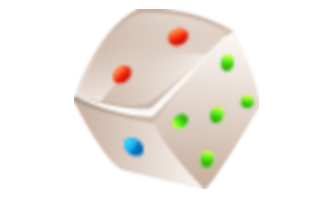Birds and Mammals
Life Science - Middle School
Six Kingdoms of Life
Multimedia Lesson

Classification
Presentation

Six Kingdoms Overview
Presentation

Animals
Presentation

Owl Pellet Dissection
Virtual Lab

Classifying Organisms
Virtual Lab

Food Webs
Interactive

Kingdom Identification
Interactive

Birds and Mammals
Study Guide

Birds and Mammals
Quiz

Birds and Mammals
Flash Cards

Birds and Mammals
Worksheet

Birds and Mammals
Game

Birds and Mammals
Vocabulary List

Vertebrates
Flip Chart

Animal Life Cycles
Flip Chart

Animal Kingdom
Flip Chart

Birds & Mammals
Flip Chart

Birds & Mammals
Flip Chart

Study Guide Birds and Mammals
❮
1
/
7
❯
BIRDS AND MAMMALS Characteristics of Birds A bird is an endothermic vertebrate that lays eggs, has feathers, and has a four-chambered heart. Most birds have the ability to fly and have scales on their legs and feet. This is evidence that they are closely related to reptiles. Our modern birds, including those that are not able to fly, evolved from organisms that could fly. Lesson Checkpoint: What adaptation allows a bird to fly? A bird’s body is adapted for flight. Their bones are lightweight and nearly hollow, they have large chest muscles, their forelimbs form wings, and they have feathers. If an organism has feathers, then it is a bird. Birds have different types of feathers that are adapted to serve a specific purpose. One type of feather is called a contour feather. A contour feather is large and gives shape to a bird. Contour feathers give a bird balance and help it steer when it is in flight. The other type of feather is called a down feather. Down feathers trap heat and keep a bird warm in its environment. Down feathers are found next to a bird’s skin and overlap, trapping air and insulating the bird. An insulator does not conduct heat and therefore keeps warm air from escaping. © Copyright NewPath Learning. All Rights Reserved. Permission is granted for the purchaser to print copies for non-commercial educational purposes only. Visit us at www.NewPathLearning.com.
Digestion If you remember seeing a bird, chances are that you noticed that a bird does not have teeth. Instead, they have a structure called a bill. As we learned in Topic 8, a bird’s bill is adapted to the type of food that it eats. After eating, food is stored in a structure called its crop. A crop allows a bird to store food after it has eaten. The stomach is the next stop for food, where digestive juices bathe the food. The food will next enter the gizzard, the muscular part of the stomach that squeezes and grinds down the food further. The gizzard makes up for what the teeth of other animals perform. Breathing Because birds are endothermic, they need to use a lot of energy to maintain body temperature. This means that they must eat a large amount of food to be able to produce a high amount of energy daily. The high energy demand means birds have a high demand for oxygen to be able to release the energy stored within the food. This requires a very efficient method of getting oxygen to the cells. Birds evolved air sacs, which allow them to take in more oxygen for every breath of air. © Copyright NewPath Learning. All Rights Reserved. Permission is granted for the purchaser to print copies for non-commercial educational purposes only. Visit us at www.NewPathLearning.com.
Circulatory System The circulatory system of birds is also adapted to be efficient in supplying the cells with plenty of oxygen. The hearts of birds have four chambers that consist of two atria and two ventricles. The advantage of the four-chambered heart is that the oxygen-poor blood is not able to mix with the oxygen-rich blood. This increases the amount of oxygen that gets into the body. The brain and the senses of sight and sound of birds are highly developed. This is because flying is not an easy task. The brain is used more, causing it to develop or adapt to this amount of use. Reproduction The reproduction of birds is done through internal fertilization. In the majority of bird species, the female will lay the eggs in a nest that was put together by one or both parents. The egg will only continue to develop if the egg stays at or near the temperature of the parent’s internal temperature. This means that the eggs need to be incubated by the parent bird to keep the eggs at a temperature that is nearly the same. The length of time that it takes for an egg to hatch varies between the different species. When the bird is ready to hatch out of its shell, it will peck its way through the shell. © Copyright NewPath Learning. All Rights Reserved. Permission is granted for the purchaser to print copies for non-commercial educational purposes only. Visit us at www.NewPathLearning.com.
Diversity of Birds Birds are the most diverse land vertebrates with almost 10,000 different species. Birds have adapted to their environments by the size and shape of their eggs, claws, and bills. Woodpeckers feed on the insects that they find in holes they make in the sides of trees. Birds of prey will scan the ground with their sharp sense of sight until they see prey. They will then swoop down and capture the prey on the ground. © Copyright NewPath Learning. All Rights Reserved. Permission is granted for the purchaser to print copies for non-commercial educational purposes only. Visit us at www.NewPathLearning.com.
Flight-less birds like the ostrich of Africa are the largest modern bird. Instead of flight, it adapted to its environment by having the ability to run at high speeds. Bee-eaters catch their insect prey while flying through the air. Long-legged waders generally catch prey by combing the water with its long bill. Owls adapted to hunting at night. Their eyesight and hearing are very sharp and help them to find prey in the darkness. Characteristics of Mammals A mammal is an endothermic vertebrate that has skin covered with fur or hair, a four-chambered heart, a wide arrangement of teeth, and young that are born alive and feed by milk that was produced by the mother’s body. All mammals have hair or fur during the course of their lives. Hair and fur is an adaptation to prevent the loss of heat in environments that can be cold. Hair is grown by specialized living cells in the skin and is made up of dead cells. The actual amount of hair that a species has varies widely between the different species. Hair or fur growth are adaptations that allow mammals to live in cold climates. Without the hair or fur it would not be possible. © Copyright NewPath Learning. All Rights Reserved. Permission is granted for the purchaser to print copies for non-commercial educational purposes only. Visit us at www.NewPathLearning.com.
Feeding Mammals gain the energy to produce heat for their bodies from the food that they eat. Teeth have adapted to increase the efficiency of digesting the food that is eaten. Four Types of Teeth in Mammals There are four different types of teeth among the species of mammals. There are incisors, which have a flat edge and are used to cut and bite their prey. Canines are teeth that have a sharp point and are used to stab and tear food. The premolars and molars are teeth that grind and shred food into smaller and smaller pieces. The teeth of a species indicate the type of food that a species feeds on. The presence of developed canine teeth normally means that the species are carnivores because canines are used to stab and hook into prey. Respiratory System Mammals obtain oxygen using lungs. Underneath the lungs is a muscle called a diaphragm. The diaphragm is located at the bottom of the chest and expands and contracts in order take air in and push air out of the lungs. All mammals have a four-chambered heart with a double-looped circulatory system. This helps to replace oxygen and get rid of carbon dioxide efficiently. Nervous System The nervous system is highly developed and has adapted to the lifestyle of each individual species. The highly developed nervous system of a mammal allows them to move swiftly through their environment with accuracy. Fertilization of Mammals Fertilization occurs in mammals internally. There are a few species that lay eggs that are shelled, but most offspring are developed within the mother. Milk is also produced within the mother and is fed to the offspring after being born. Mammals got their name from the glands that produce milk, called mammary glands. © Copyright NewPath Learning. All Rights Reserved. Permission is granted for the purchaser to print copies for non-commercial educational purposes only. Visit us at www.NewPathLearning.com.
Diversity of Mammals There are approximately 6,000 different species of mammals that exist today. The majority of mammals live on land, but some species adapted to live in the air and in the oceans. There are three groups of mammals, according to how their young develop. Three groups of mammals They are monotremes, marsupials, and placental mammals. The monotremes are very strange mammals that lay eggs. There are only three montreme species: two are spiny anteaters and the other is a duck-billed platypus. Marsupials are mammals that are born at an early stage of development and usually continue development in the pouch of the mother’s body. Kangaroo’s and Opossums are examples of marsupials. Placental mammals are mammals that develop completely inside the mother’s body. This group of mammals gets its name from the organ that passes materials between the mother and the offspring, called the placenta. Elephants, mice, sloths, horses, dolphins, and humans are all examples of placental mammals. © Copyright NewPath Learning. All Rights Reserved. Permission is granted for the purchaser to print copies for non-commercial educational purposes only. Visit us at www.NewPathLearning.com.
Table Of Contents: Six Kingdoms of Life
1. Classification
2.1. Why Do Scientists Classify Organisms?
There are millions of types of organisms that live on Earth. A classification system helps scientists study, record and share information about organisms in a systematic and useful way.
2.2. How Are Organisms Classified?
The science of classification is called taxonomy. Organisms are classified according to shared characteristics such as cell structure, physical appearance, how they obtain food and method of reproduction.
2.3. DNA Technology and Classification
DNA technology is also playing a role in classification. The study of gene sequences and mutations has enabled scientists to understand the evolutionary relationships between different organisms.
2.4. Levels of Classification
There are seven levels of classification—kingdom, phylum, class, order, family, genus and species.
2.5. Scientific Name
Each organism is identified by its scientific name, which includes the genus and species. For example, humans are called Homo sapiens.
2. Six Kingdoms Overview
3.1. What Are the Six Kingdoms?
All organisms are classified into six different kingdoms—archaebacteria, eubacteria, protists, fungi, plants and animals.
3.2. Archaebacteria and Eubacteria
From an evolutionary perspective, archaebacteria and eubacteria are the simplest organisms, having evolved billions of years ago.
3.3. Protists
Protists are more complex organisms with a variety of characteristics. Scientists believe that protists evolved from bacteria.
3.4. Fungi, Plants and Animals
Fungi, plants and animals all evolved from different types of protists.
3. Archaebacteria and Eubacteria
4.1. Characteristics of Bacteria
Bacteria are simple unicellular organisms that can be found in nearly every environment on Earth. All bacteria are prokaryotic—they do not have a true nucleus or organelles with membranes.
4.2. Two Bacterial Groups
DNA studies suggest that there are two distinct groups of bacteria. Therefore bacteria are divided into two kingdoms—archaebacteria and eubacteria.
4.3. Where Are Archaebacteria Found?
Some archaebacteria are found in extreme environments, such as hot springs and salt lakes, while other species live in the ocean and soil.
4.4. Where Are Eubacteria Found?
Eubacteria are more common than archaebacteria and are found in soil, water and our bodies.
4.5. Beneficial and Harmful Bacteria
Archaebacteria and eubacteria are diverse kingdoms of organisms that contribute to oxygen production, food production, decomposition, medical applications and biotechnology. Some bacteria are harmful and cause disease.
4. Protists
5.1. Characteristics of Protists
Protists are eukaryotic organisms that have a true nucleus and membrane-bound organelles. They typically live in or near water and can be unicellular or multicellular.
5.2. Variety of Protists
The protist kingdom includes organisms that are not classified as plants, animals or fungi. Protists are difficult to categorize because there is a wide variation of characteristics among species.
5.3. Protist Groups
Protists are often grouped according to whether they are animal-like, plant-like or fungus-like.
5.4. Protozoa
Animal-like protists are known as protozoa. They are single-celled organisms that move to find food. Amoeba and paramecium are classified as protozoa.
5.5. Algae
Plant-like protists, called algae, contain chloroplasts and make their own food by the process of photosynthesis. They are primarily found in fresh water. Examples include volvox, euglena and spirogyra.
5.6. Fungus-Like Protists
Fungus-like protists are heterotrophs that feed on decomposing matter. They reproduce using spores. Water molds, downy mildew and slime molds are fungus-like protists.
5. Pause and Interact
6.1. Review
Use the whiteboard text tool to complete the activity.
6. Fungi
7.1. Characteristics of Fungi
Fungi are heterotrophic eukaryotes that absorb nutrients from decomposing matter. Most are multicellular, but some, like yeast, are unicellular.
7.2. Parts of a Fungus
The bodies of most fungi are composed of filaments called hyphae. These hyphae grow into a large mass of cells called mycelium.
7.3. Fungus Reproduction
Most fungi reproduce using spores. Fungi are classified into three groups according to their sexual reproductive structures—zygote, sac and club fungi.
7.4. Beneficial Fungi
Many fungi are beneficial organisms, contributing to the recycling of nutrients, food production and medical advances.
7.5. Harmful Fungi
There are some fungi that are harmful and cause disease in animals and plants.
7. Plants
8.1. Plant Characteristics
Plants are multicellular eukaryotes that live primarily on land. They are autotrophic, obtaining energy through photosynthesis.
8.2. Cellulose and Chloroplasts
Plant cells are distinct because they have cell walls composed of cellulose. Chloroplasts inside the cells contain the pigment chlorophyll that is needed for photosynthesis.
8.3. How Are Plants Classified?
Plants are classified according to whether they have vascular systems, produce seeds and develop flowers.
8.4. Nonvascular Plants
Nonvascular plants absorb water and nutrients directly from their surroundings. They are seedless and are considered to be the most ancient land plants. Examples include liverworts, mosses and hornworts.
8.5. Seedless Vascular Plants
Ferns, club mosses and horsetails are seedless vascular plants that reproduce using spores. The vascular tissues, xylem and phloem, carry water and nutrients throughout the plant.
8.6. Gymnosperms
Gymnosperms are vascular plants that produce seeds, but do not have flowers. The seeds of most gymnosperms develop in the scales of cones.
8.7. Angiosperms
Angiosperms are flowering vascular plants that produce seeds inside a fruit.
8. Pause and Interact
9.1. Review
Use the whiteboard tools to complete the activity.
9. Animals
10.1. Animal Characteristics
All organisms in the animal kingdom are multicellular heterotrophs, and their cells lack cell walls. Most animals reproduce sexually, have some type of nervous system and are capable of movement.
10.2. Major Animal Groups
There are over 1.5 million known species of animals. This branching tree shows how major animal groups are possibly related.
10.3. Invertebrates
Invertebrates are animals without backbones. These animals live in water and on land. They account for over 95% of the known animal species.
10.4. Invertebrate Groups
Some of the major groups of invertebrates include sponges, worms, mollusks, echinoderms, cnidarians and arthropods.
10.5. Vertebrates
Vertebrates have a spinal cord encased by protective vertebrae. They also have an endoskeleton that is composed of cartilage or bone. Fish, amphibians, reptiles, birds and mammals are all vertebrates.
10. Pause and Interact
11.1. Kingdom Identification
Drag and drop each organism into the correct kingdom.
11. Vocabulary Review
12.1. Six Kingdoms of Life Vocabulary Matching
All organisms in the animal kingdom are multicellular heterotrophs, and their cells lack cell walls. Most animals reproduce sexually, have some type of nervous system and are capable of movement.
12. Virtual Investigation
13.1. Classifying Organisms
In this virtual investigation you will classify several organisms according to their distinguishing characteristics. Use the information provided and your knowledge of the six kingdoms to help identify each organism.
